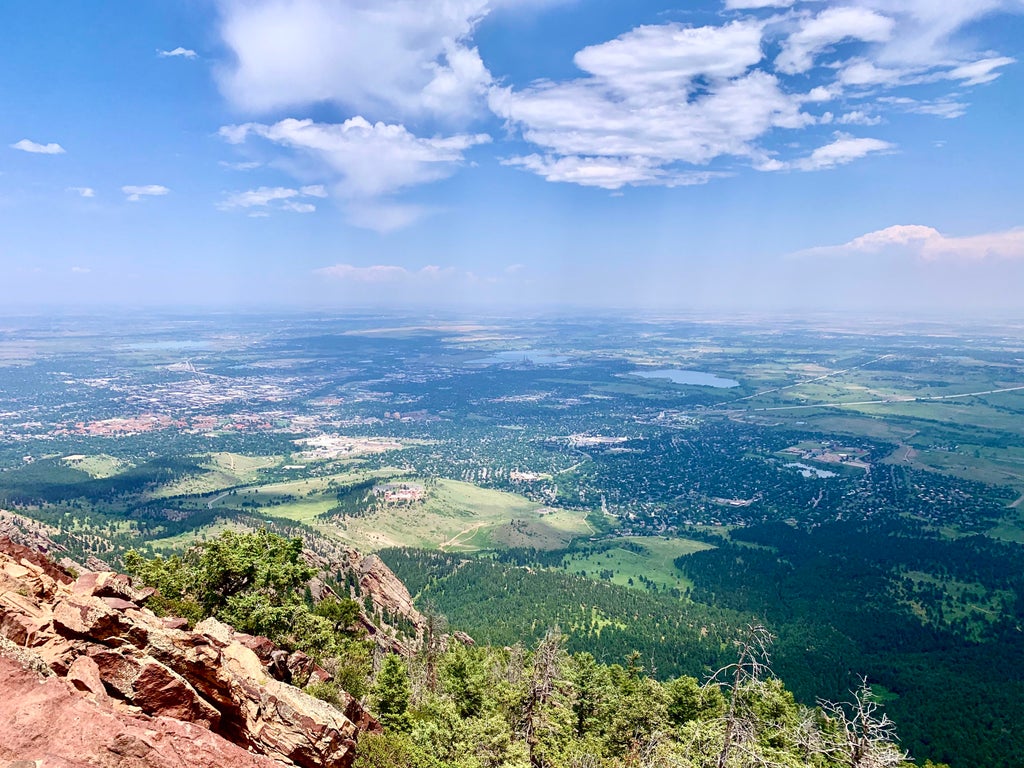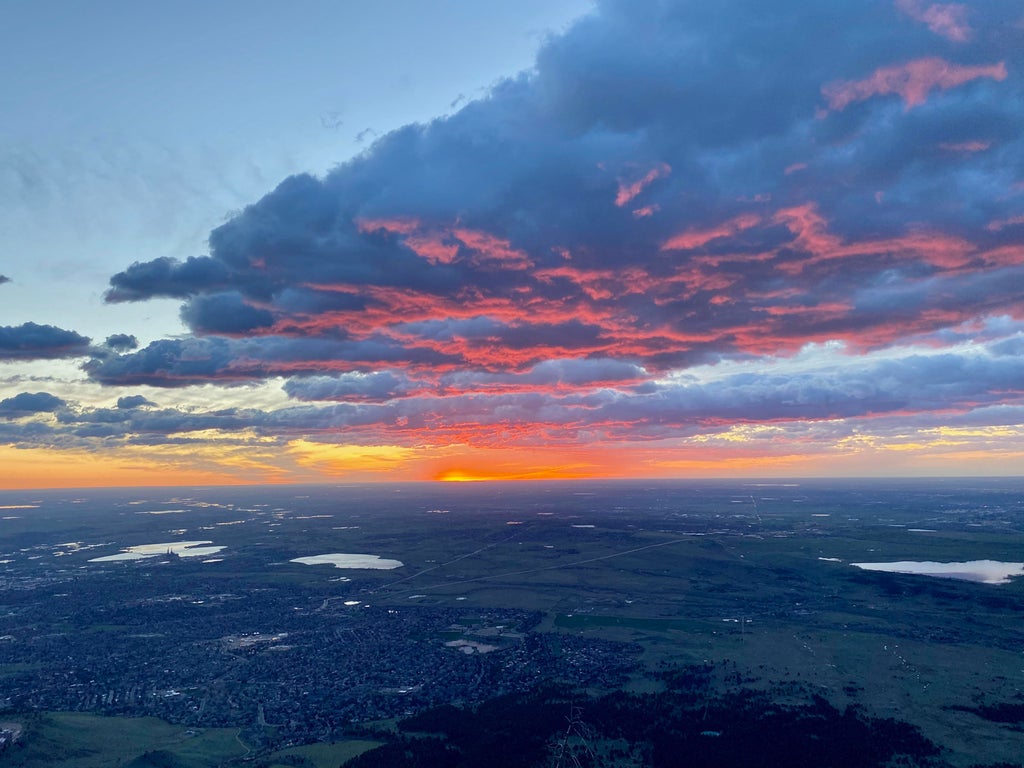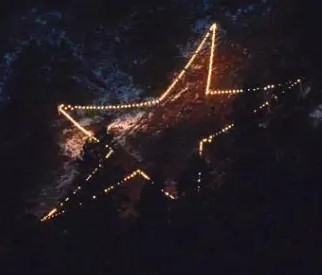- Crime Scene Drawings
- Evidence
- DNA UM1 Profile
- CoraFiles
- Horita's DNA/Bode Notes
- Drive-Stun Wounds
- FGG Policy
- Morrissey w/Silverman
- Dougherty w/Silverman
- Victim Rights Act
- Victim Shoes
- Ransom Note
- Autopsy Report
- Thomas Deposition
- JBRCE Timeline
- 911 Call
- Acronyms
- Body
- Body - Internal
- Body - Head
- Body - Neck
- Book List
- Burke Did It?
- Clothing
- Cords
- Cover Up?
- DNA/Blood
- Duct Tape
- Evidence Interpretation
- Fibers
- Foreign Faction
- Friends
- Intruder
- Intruder - Sex Offender
- Intruder - Sexual Predator
- Intruder - Aquaintance
- John Mark Karr
- Neighbors
- Patsy & John Killers?
- Patsy
- Pineapple
- Prior Abuse?
- Ransom Note
- RN Comparisons
- RN Interpretations
- RN Movie Comparisons
- RN Who Wrote It?
- Staging
- Stun Gun
- Worked for Ramseys
- Who is Who in the Case?
- pdf Library
Part 11. Steve Thomas Deposition
Q. Why did you misrepresent the truth then in your book when you said that the book was going to be the inside story answering a wide range of important questions, including why were the Ramseys handled with kid gloves and never asked by law enforcement to take lie detector tests? MR. DIAMOND: I'm going to object -- Q. (BY MR. WOOD) Were they asked or not asked by law enforcement to take a lie detector test? I'm trying to find out the truth of the investigation. MR. DIAMOND: Do you want to withdraw the first question and have him answer the second question? Q. (BY MR. WOOD) Do you understand the question? Here is your book jacket. You saw it before it hit the stands, didn't you? MR. DIAMOND: Which are we answering? Q. (BY MR. WOOD) This one right here. Did you see this -- A. Book jacket, yeah. Q. -- book jacket before it hit the stands? A. Yes, sir, that would be my book jacket -- Q. There it is. A. -- before the book went into the -- Q. Right. A. Retail store. Q. Let's just try to make this clear. I just want to know what the truth is. Were the Ramseys asked by law enforcement to take lie detector tests or not? A. Yes, and I believe you know that because read the transcript of my interview with your clients from April 30, 1997, and I think even Alex Hunter has said a monkey could understand that polygraph examinations were being requested. Q. Now we believe Alex Hunter on that point; is that what you're telling me? A. As I said, Alex Hunter says a lot of things but I happen to agree with his assessment that is borne out by the transcript of that interview. Q. Did you ever seek to interview the Richardson twins who lived with Melody Stanton? A. No. Q. Why not? A. Because I was unaware of these people. Q. Did anybody in the Boulder Police Department make an attempt, to your knowledge, to interview the two 30-year old twins, the Richardson twins, that lived with Melody Stanton? A. Not that I'm aware of. Q. How about the two friends of Fleet White that were there, did you all ever get any non-testimonial evidence from those two individuals? A. Which two friends are you referring to? Q. The ones that were with him on Christmas and were at the Ramseys on I believe the party of the 23rd; do you know who I'm talking about? A. Mr. Fleet White's house guests at the time? Q. Yes. His friends that were house guests, did you all ever get any non-testimonial evidence, hair, DNA, handwriting from Mr. Cox or Mr. Gaston? A. I believe Detective Harmer received that assignment and made attempts to conduct that investigation. And I'm not sure whether or not she was successful in those attempts. Q. On page 270 of your book. Chief Beckner started talking about a successful Title-3 electronic surveillance down in Florida where the police had recorded the mother saying 'The baby is dead and buried ... because you did it' and the father replied 'I wish I hadn't harmed her -- it was the cocaine', end quote. "I considered the irony of Beckner discussing a Title-3 that worked damned well in Florida when he had been a part of the scandal-frightened leadership that wouldn't let us try the same tactic." Have I read that correctly? A. I believe so. Q. That was the Aisenberg case, wasn't it, Mr. Thomas? A. That is the case that is being referred to here, yes. Q. Right. You understand that charge was dismissed against the family because the transcripts of the tapes were not consistent with the representations made as to the content by the police? A. I'm not familiar with that. Q. You hadn't tried to study what happened to the Aisenberg case at all? A. No, as we sit here today I don't know the conclusion of the Aisenberg case. Q. I would suggest it would be interesting for you to look into it in your spare time. Clearly you're going to tell me that the Boulder Police Department thoroughly investigated, John Ramsey and Patsy Ramsey, right? A. Is that a question? Q. Yes. Clearly you're going to tell me that they thoroughly investigated, the Boulder Police Department thoroughly investigated John Ramsey and Patsy Ramsey? MR. DIAMOND: How do you know what he is going to tell you unless you ask him? MR. WOOD: I just did. MR. DIAMOND: No. MR. WOOD: If he wants to disagree with me he can. MR. DIAMOND: You asked him whether -- MR. WOOD: I'm not asking you. Q. (BY MR. WOOD) Will you answer my question? Did you understand? I will be glad to make it clear. MR. DIAMOND: Why don't you ask him non-argumentative questions. MR. WOOD: Why don't you ask him questions -- MR. DIAMOND: Objection. MR. WOOD: -- when you want to. MR. DIAMOND: Objection. Argumentative. Q. (BY MR. WOOD) Are you going to answer my question? MR. DIAMOND: If you can answer that question. A. It was phrased as a statement but I think I understand the question. Q. (BY MR. WOOD) Thank you. A. Given the God almighty obstacles that we were up against, we tried to investigate them as thoroughly as we could as paper tigers. Q. When you were under threat of lawsuit, the first thing you did was hired a PR person, Sherill Wisinhunt (sic) and you hired lawyers, right? A. No, I didn't hire Sherill Whisenand. Q. Whisenand, I'm sorry. A. She was a friend of mine long before this who agreed to take these calls for me and, having been charged with something and as a defendant in a case, I thought it was necessarily prudent to retain an attorney. Q. Page 284 -- let me ask you before I go there, during Mr. Foster's presentation, did he talk to you all about the Dirty Harry movie and the references in the ransom note to it by talking about the fact that the Ramseys' favorite movie was Animal House and there was a scene in Animal House where somebody drove a car through the campus and hit a fire hydrant and there was a similar scene in Dirty Harry like that. Do you recall that? A. I recall something vaguely similar to that where he was discussing events out of motion pictures. Q. Didn't you think that was borderline on the absurd, sir, to tie Dirty Harry to the Ramseys because they liked the movie Animal House and it had a scene in it where somebody ran into a fire hydrant? Didn't you think that was literally absurd or did you think that was good forensic testing? A. Taken out of context as you represent it today it -- Q. Put it into context, if you would, please. MR. DIAMOND: Let him finish his answer, please. Go ahead. A. Taken out of context as you represented today, that may seem odd. But at the time, it was a part of his presentation. And I don't recall my observation being how you described it as fantastic or incredible or whatever term you used. Q. (BY MR. WOOD) Was there a transcript from a tape recording of the first interview of Jackie Dilson, because you made reference that I should look at the transcript, that tells me that maybe it was recorded and it was transcribed? A. I would -- it was Detective Gosage and my policy and practice in this case to try and record witness interviews when feasible and we may very well have taken a tape recorder -- as a matter of fact, I would have to answer, yes, I believe we did record and have transcribed that interview. Q. Page 286, you make reference to a red turtleneck being stripped off of JonBenet when it got wet from I guess her bed wetting. MR. DIAMOND: Where are you? Q. (BY MR. WOOD) Third paragraph down "I concluded the little girl had worn the red turtleneck to bed, as her mother originally said, and that it was stripped off when it got wet." Are you talking about wet from urine? A. In this hypothesis we're talking about, yes. Q. Did you ever have or the Boulder Police Department to your knowledge ever have the red turtleneck found in the bathroom tested forensically to determine if it had any type of trace evidence or other evidence on it? A. Again, it sounds like you know otherwise but I was under the impression from Trujillo that there wasn't a presumptive test for urine. Q. Did anybody tell you that they found the red turtleneck and that it was wet? A. No, this is what I am surmising in the hypothesis. Q. Was the red turtleneck taken into evidence? A. I certainly believe it was. Q. Did it have any type of urine stain on it? A. Not that I'm aware of. I never have looked at it personally. Q. Where did you get the statement that it got wet; did you just manufacture that out of whole cloth? A. No, I'm suggesting that that was a reasonable explanation for the final resting place of this red turtleneck of which she may have indeed worn home. Q. But you had no evidence to support that statement about the turtleneck being wet, true? A. No, I don't know that it was urine stained. Q. Or wet? A. Or wet. Q. Was there any test done on the duct tape that would establish the imprint of JonBenet's lip prints on that tape? A. Was there any test that would establish that? Q. Did you all to your knowledge, did the Boulder Police Department conduct any test that would establish that the duct tape that was pulled off of her mouth by John Ramsey that was then picked up by Fleet White was found somehow to contain a perfect set of JonBenet's lip prints, was any test performed that made that finding? A. There was an examination apparently done at some point which was reported back to a detective briefing at which I was present and I believe that was Wickman or Trujillo that shared that information. Q. Who conducted that examination? A. I don't know. Q. Was it an expert of some type? A. I don't know that there is such a thing as an expert examination and there is no testing that I'm aware of. I think that's more common sense observation. Q. Did you ever find the roll of duct tape because the duct tape was torn on both ends, wasn't it? A. We never found the roll of duct tape to source to the duct tape that was covering the victim's mouth. Q. And you didn't find any prior application of this type of duct tape in the house, did you? A. Similar, but I don't know that we ever found a match. Q. Actually what you said was similar was just one piece that was found on a painting, right, and it was found not to be in fact from the same -- A. Roll, that's right. Q. -- from the roll; is that right? A. Right. Q. Yeah. And did you ever find cord in the house? One end of the cord was, as I understand it, was cut. The other end was sealed for the garrote; is that right? A. You know, I'm not going to say that as I sit here today. I would have to review -- Q. Forget that, don't worry about that. Did you ever find any cord in the house from which the garrote or the rope that tied her hands together was from? Did you ever find that? A. No. As far as I know, the cord used on the victim was never sourced to anything in the house. MR. DIAMOND: If this is a good point, before you change subjects? MR. WOOD: Let me see how much time I've got. Let me see. MR. RAWLS: You have something about one ten left. MR. WOOD: Give me about two minutes, let me just run through a couple other things real quick. MR. DIAMOND: You have an hour. Q. (BY MR. WOOD) There was some paint -- MR. DIAMOND: There's one hour left. MR. WOOD: I do hope you'll give me some consideration on a little extension if we can finish up and I don't have to take it up with the court. Q. (BY MR. WOOD) The garrote was made out of a paint brush that was believed to be a paint brush in a paint tray down in the basement, right? A. That's my understanding. Q. And there was the tip end with the brush found in the paint tray, right? A. No, it's my understanding the brush end -- Q. The brush end was found, the tip end was broken off and never found, right? A. Yeah, it's my understanding that the handled shaft was fashioned into the garrote handle. And Lou Smit told me that there was a missing piece that has been unaccounted for. Q. Did you ever find any evidence to dispute what Mr. Smit told you in that regard? A. No. Q. You've already told me there were the missing pages from the pad, right? A. If we're talking about pages 17 through 25, if memory serves, yes, those were unaccounted for. Q. And there was some bleed-through on what has been referred to as the practice ransom note, right? A. Correct. Q. Was there any bleed through on what -- on the ransom note itself? A. Well, 17 through 25 missing, 26 with bleed-through on it presumably from 25. And if memory serves, 27 started the ransom note so you had some, I think, bleed-through from the practice note.` Q. The practice note consisted of Mr. -- why don't you tell me what was on the ransom note, the practice ransom note, as has been described? A. I believe that said Mr. And Mrs., the what looked like the down stroke of an R which could have been mistaken for an I. Q. Did any of the examiners compare that handwriting to the ransom note or was that simply not sufficient to draw any conclusions about the commonality of authorship? A. I believe that the ink was matched. Q. The what, the ink? A. The ink from the practice note to the ransom note was matched. Q. In what way? A. The same pen wrote the practice note that wrote the ransom note. Q. There were three pens. Did they determine which of the pens wrote the practice note and the ransom note? A. The same pen. Q. And that was a consistent or was that a finding by forensically of an absolute match between pen and ink? A. It's my understanding that the Secret Service matched the ink from practice note to the ransom note. Q. Pens were in plain view? A. You're talking pens plural. I'm talking about the pen that wrote -- Q. The pen, that was in a -- it was in plain view? A. In a cup in the kitchen is my understanding. Q. Pad was in plain view, given voluntarily by John Ramsey to the police? A. I don't know about plain view, I wasn't there. But it's my understanding that he produced that from a countertop area on the first floor. MR. WOOD: Why don't we take that break now. VIDEO TECHNICIAN: The time is 4:47. We're going off the record. (Recess taken from 4:47 p.m. to 4:57 p.m.) VIDEO TECHNICIAN: The time is 5 4:57. We're back on the record. Q. (BY MR. WOOD) Mr. Thomas, if you would look at page 152 of your book. Next to the last paragraph, it ends "'I believe she wrote it.'. Ubowski had recently told one detective "'I believe she wrote it.'" Who was -- A. Yeah, may I read the paragraph? Q. Yeah, I want to find out who that detective is. A. I believe that's Trujillo and Wickman who made that statement, specifically Wickman, which John Eller certainly also heard. Q. Anybody else? A. I think this was Tom Koby. This was that meeting I described in a vehicle at the parking lot of the shopping mall, Koby, Eller, Wickman, Trujillo, and I don't know whether or not that's on tape. Q. But isn't the bottom line that Chet Ubowski made it very clear that, whatever his beliefs were, he was not in a position from his standpoint to state under oath that Patsy Ramsey was the author within any degree of certainty; isn't that what he told you, sir? A. No, the conduit was Wickman who said something very similar to that that he couldn't get on the stand and testify to it. Q. And that never changed while you were there, did it, that Ubowski would not get on the stand and testify to it, right? A. Yeah, as far as I know Ubowski never took the stand and testified to it. Q. And it was always your understanding that he said that he was not in a position to do so from an opinion standpoint; isn't that true? A. To take the stand? Q. He would not go under oath and testify that Patsy Ramsey within reasonable certainty was the author of the note? A. Well, the reasonable certainty I recall I think it was Mr. Ubowski speaking at the VIP presentation and I would like to see a transcript of that because I thought -- Q. I thought maybe -- A. -- his answer or his remarks were fairly strong there. But no, he was obviously not in a position to take the stand and make that identification in court. Q. Am I right, maybe I went over this and I apologize, did Mr. Ubowski in his report say "There is evidence which indicates that the ransom note may have been written by Patsy Ramsey but the evidence falls short of that necessary to support a definite conclusion." That's Mr. Ubowski's opinion, right? A. That's his formal report opinion. Q. Did you ever know that opinion to change before August of 1998 when you left? A. To get stronger or weaker? Q. Yes. A. No. Q. Mr. Speckin we've been over, although do you recall Mr. Speckin stating that, When I compare the handwriting habits of Patsy Ramsey with those presented in the -- A. Mr. Wood, bring me to where you are. I'm lost, sir. Q. I'm sorry, I'm in my notes. I'm not in the book. A. Okay. Q. Do you recall Mr. Speckin finding -- we talked about he found no evidence that Patsy Ramsey disguised her handwriting exemplars. I didn't want to go over this part and I wanted to. Mr. Speckin stated, When I compare the handwriting habits of Patsy Ramsey with those contained in the questioned ransom note, there exists agreement to the extent that some of her individual letter formations and letter combinations do appear in the ransom note. When this agreement is weighed against the number type and consistency of the differences present, I am unable to identify Patsy Ramsey as the author of the questioned ransom note with any degree of certainty. I am, however, unable to eliminate her as the author. Does that sound correct in terms of what Mr. Speckin's formal report was? A. If that's what you're reading from, that's consistent with my recollection. He did have other comments and information as well. Q. Lloyd Cunningham and Howard Ryle were obviously employed by the Ramsey family, true? A. That was my belief. Q. You knew that Lloyd Cunningham had in fact been the CBI examiner that had certified Chet Ubowski? A. No, but I do recall him saying he had done some training or had some capacity in that effect with Mr. Ubowski. Q. How about Howard Ryle, did you know him to be formerly with the CBI? A. I didn't know he was previously with the CBI. Q. Did? A. Did not. Q. I'm just trying -- I may be confused about which one was with the CBI or taught Mr. Ubowski? A. One was with, I think, previously the San Francisco PD and you may be correct; the other one may have been with CBI. Q. Did you all conclude that there were references in the ransom note from Dirty Harry, Speed, the movie Ransom, the movie Nick of Time and Ruthless People? A. That wasn't my conclusion. I think it was Lou Smit that brought that to the attention of several, and I don't know that those were verbatim quotes that matched the ransom note. Q. Were you familiar -- well, was that investigated by the Boulder Police Department in terms of trying to find out from movie rental records whether the Ramseys had ever seen those movies? A. Unfortunately, one of the obstacles we ran into with movie rental records was after the Thomas Hill, Anita, I can't remember her last name, hearings. Movie records are very, very restricted and without warrants or subpoenas or something above and beyond, we couldn't just go to the video store and check rental history. Q. Didn't the Ramseys give you almost 100 releases to get information? A. I believe after I left. Q. But nonetheless, you believe they did that? A. I have heard, I think even you say that after -- or at a point in time after which I left the investigation, I was of the impression that after Kane came on board, they gave a number of consent releases. Q. They also provided a considerable amount of historical writings from Patsy Ramsey, didn't they, in addition to the five exemplars? A. I don't know if those were -- if those were seized by crime scene search warrant or if those were surrendered. Q. I think we went over Mr. Dusak, bear with me again, the Secret Service document examiner found a lack of indications and said that a study and comparison of the questioned and specimened writings submitted has resulted in the conclusion that there is no evidence to indicate that Patsy Ramsey executed any of the questioned material appearing on the ransom note. Is that consistent with your recollection of Mr. Dusak's conclusion? A. If you're reading verbatim, I won't -- Q. I'm asking you if it's consistent with your recollection. I'm not representing anything other than my notes here on it. A. Yes, but he said many other things, too. Q. But that portion is certainly consistent with your recollection, true? A. As I sit here today, yes. Q. Howard Ryle put his opinion, another Ramsey expert who was, I believe, the former CBI document examiner, but regardless of whether I'm right about that or not, Mr. Ryle put his opinion at between probably not and elimination of Patsy Ramsey as author of the ransom note, further stating that he believes that the writer could be identified if historical writing was found. Is that consistent with your recollection of Mr. Ryle's opinions? A. You know what, I don't know that the Ramsey, attorneys or the Ramseys -- or at least I never saw Mr. Ryle's report. Q. You weren't part of the presentation that Mr. Ryle and Mr. Cunningham made for Michael Kane and the DAs? A. I was present at a presentation they made. Michael Kane was not yet on the case and I think this was in May of '97. Q. May of '97 was the presentation that Ryle and Cunningham made, you did -- A. I did observe that. Q. What I have read to you does that seem, though, clearly to be consistent with your recollection about what Mr. Ryle and Mr. Cunningham concluded? A. One or the other sounds accurate. Q. I want to show you and get the benefit of my elaborate markings. MR. WOOD: Why don't we mark this as Defendants' 3. (Exhibit-3 was marked.) Q. (BY MR. WOOD) I don't have copies, I apologize. I'll give you a clean copy of that, too, if you don't mind instead of putting my stuff on it? MR. DIAMOND: Do you have a clean copy? MR. WOOD: No, that's the only one I've got. I told Sean I didn't want to 4 check bags so I didn't bring a bunch of copies. (Pause.) Q. (BY MR. WOOD) Had you seen that article from KCNC from April 10, 2000, before I just showed it to you today? A. No, as I've said, I wasn't aware that Mr. Ubowski was retracting any statements prior to you're making me aware of that today. Q. If this is correct Mr. Ubowski is in fact stating on April 10, 2000 that he denies saying that Patsy Ramsey wrote the note and that he, the claim that 24 of the alphabet's 26 letters looked like -- looked as if they had been written by Patsy is denied as the lab does not quantify like that? You have never heard those statements made by the CBI before I showed you this KCNC report today? A. No, as I have said, no. Q. I forgot to ask you how many lectures have you given consistent with this web page? A. Very few, maybe three or four. Q. Do you have any lined up in the future? A. I do. Q. Could you try and tell me where the three or four were, just the names of the cities? A. Indianapolis, New Orleans, Snowmass, Colorado. Q. And what is coming up? A. Ohio. And I think there is one after the first of the year. Ohio might be after the first of the year. Minnesota later this year. Q. Dr. Wecht says, Steve Thomas knows so much about the murder of JonBenet Ramsey he doesn't mince words. Do you believe that's an accurate description of you? A. That's Dr. Wecht's description of me. Q. I'm asking you if you think it's accurate, that you don't mince words? A. It depends on the context. Q. Didn't it bother you a little bit about putting Don Foster's name on this in light of the letter that we looked at today that you've never even seen the second and third pages of -- A. No. Q. -- Mr. Thomas? A. No. Q. Do you still think he's the best linguistic expert in the country? A. He still does work for law enforcement and seems to be highly regarded and I certainly respect Dr. Foster. Q. Did you all send that letter to the FBI and let them know about what Mr. Foster had said to Patsy Ramsey? A. What letter is that? Q. The letter that I just showed you today that you had only seen the first page of? A. I did not. Q. Page 75 of your book. The second paragraph "The FBI would tell us that the disposal of the body of JonBenet had the classic elements of a staged crime, complete with a Hollywoodized ransom note." Was there any specific member of the FBI that you attribute that statement to? A. The meeting in I believe it was August or September of 1997. Q. Quantico? A. In Quantico at a big, many, many people in the room. Q. If I hear you throughout this testimony and it seems to me and from your book, the FBI was heavily involved in this investigation from early on; wouldn't you agree? A. They were very supportive of us and involved, yes. Q. Yeah, I mean, they were heavily involved for a case that really was not a federal jurisdiction case, a murder? A. Arguably. Q. I mean when I was out there saying, you know, I didn't think the FBI is objective because they've been involved in this case to a significant amount, whether you agree or not with my objectivity conclusion, I was right about the fact that the FBI had been significantly involved in the case, wasn't I? A. For the record I don't agree with the objectivity conclusion but, yeah, they were significantly involved in the case. Q. It seems like from what you're telling me that they were of the mind that you were, that Patsy Ramsey they thought was involved in the death of her daughter? A. That certainly seemed to be my impression. Q. So whether that was an objective decision by then I certainly was right to have some concerns about whether or not they had formed such a conclusion before I submitted John or Patsy to the FBI examination, wasn't I? A. Well, twofold. One, I don't think they would have -- I don't think there was anything inappropriate with their polygraph unit or that they would have conspired in any way with their polygraphers. Q. I also comment to you the ruse interview that was attempted on Richard Jewell by the FBI might be enlightening about FBI tactics, legal and illegal. Do you agree that you all investigated the hell out of Bill McReynolds? A. Bill McReynolds was, yes, very scrutinized in this investigation, not just by us but I believe by the DA's people as well. Q. On page 115. Right about here down the second paragraph, there was somebody that was filing late reports. Was that Trujillo? A. Let me look real quick. Q. A full year had passed before he completed his report of the initial Atlanta trip? A. Yeah, help me out with the question. Q. The question is coming up. "Trujillo and Arndt still were not speaking, and the sergeant who reported the undisturbed snow now filed an amended report." Who was that sergeant? A. That was Sergeant Reichenbach. Q. And "The first officer was having difficulty in recollecting certain events." What officer was that? A. That was officer French. Q. And "Then Arndt began amending her reports, too"; is that true? A. Yes. Q. When was the initial Atlanta trip? A. I believe that was January 1st through 5th of 1997. Q. Page 160, the last paragraph. "Then the defense attorneys were allowed inside the Boulder Police Department to examine the actual ligature and garrote that killed JonBenet." Have I read that correctly? MR. DIAMOND: Can I just -- I just want to get the context. MR. WOOD: Last paragraph. MR. DIAMOND: I see where it is. I just want to -- A. I missed it; we're on 160 on the bottom of the page? Q. (BY MR. WOOD) Bottom paragraph, "Then the defense attorneys were allowed inside the Boulder Police Department to examine the actual ligature and garrote that killed JonBenet." Have I read that correctly? A. Yes. Q. "I watched sick inside, and Sergent Wickman bellowed in protest 'You're giving the fucking murder weapon to the suspects.'" Have I read that correctly? A. Yes. Q. Are those statements true and accurate? A. Yes. Q. 154, right here, second blocked out, second paragraph, "Experts engaged by the police concluded there was no stun gun involved at all, but the DA's team never relinquished their claim that such weapon an exotic weapon was used to subdue JonBenet." Have I read that correctly? A. Yes. Q. Who were the experts engaged by the police that you're referring; would you identify those for me? A. I know at least one was Dr. Werner Spitz, and Detective Trujillo would be able to identify additional. Q. Did any of those -- any police department consultants discuss at either of the presentations in terms of what they 2 thought about stun guns whether there was consistency. For example, Dr. Doberson? A. I'm sorry, run it back by me, Mr. Wood. Q. Was Dr. Deters -- the Larimer County coroner involved in the investigation by the Boulder Police Department? A. No, I'm not familiar with that name. Q. How about Sue Kitchens of the CBI? A. I am familiar with her name, but I do not know what extent she may have been involved in the investigation. Q. How about Dr. Doberson? A. I believe Trujillo and Wickman initially visited Dobersen on behalf of the police. But that was later followed up by investigators Smit and Ainsworth. Q. Dr. Doberson who I think you have a great deal of respect for? A. I don't know Dr. Doberson. Q. Do you recognize him, though, to be respected in the law enforcement community in Colorado? A. I have no opinion. I don't know anything about Dr. Doberson. Q. Do you know that he has stated within reasonable medical certainty that the marks on JonBenet's face and back were caused by a stun gun. Are you aware of that? A. Well, if you're telling me that's true -- Q. I'm just asking if you're aware of it. You said -- A. I saw that on -- Q. -- you watched some of the stuff. I'm just asking if that's what he said there? A. Right. Q. Did you watch the Tracy Mills documentary, two? A. The second one, two? Q. Yeah. A. Two, as in the number two? Q. Yeah, the second, there was one back a couple years ago, it's one that came out in the last several months, haven't seen -- A. No, I haven't seen that. Q. So you don't know what Dr. Doberson said in that, do you? A. No. Q. But he wasn't employed by the Boulder Police Department, among other things, to look at the stun gun issue, true? A. I don't know that he was employed but they went to him. Trujillo and Wickman I know did. Q. What did the Boulder Police Department conclude caused these marks found on JonBenet Ramsey's back? MR. DIAMOND: Do you want to identify what you're putting in front of him just for -- MR. WOOD: I'm going to mark it and I'll do it by copy. I don't want to mark on this color copy but this will be Defendants' 4. MR. DIAMOND: Will you identify what it is for the record? MR. WOOD: It's an autopsy photograph of JonBenet Ramsey. MR. DIAMOND: Does it have a number on it or something? MR. WOOD: I just put a number on it, a 4 just so I can copy it and mark it 5 later. If you'll just hang on to it. I don't want you to be flipping through there. There is one picture I am going to ask him about in a moment. MR. DIAMOND: Yeah. (Exhibit-4 and Exhibit-5 marked.) Q. (BY MR. WOOD) What did the Boulder Police Department determine caused those marks on JonBenet Ramsey's back as shown on Defendants' Exhibit 4? A. I don't know that the Boulder Police Department as an entity formed a consensus opinion, but relying on the experts in this case, and Detective Trujillo specifically who was assigned to the stun gun investigation told us and I remember seeing it that Werner Spitz concluded, I believe, what was believed to be stun gun marks may have been a patterned object, if I recall correctly, or I think another explanation was on her back lying on some sort of object. Q. That was Dr. Spitz only? A. Well, Dr. Spitz completed a report on that. I think Dr. Lee had some opinion on it. Certainly Trujillo filed information about that. Q. I'm going to show you defense Exhibit Number 5, which two photos, one is obviously Number 4 and then 5 is a picture of JonBenet's side of her face. There were two marks on her face. The marks on her face and the marks on her back were the same distance apart, right? A. I don't know that those were identical. I have heard -- Q. Do you deny that? A. I have heard Mr. Smit say that they were identical. I have heard Trujillo say they're not. Q. That the marks were not -- shouldn't one just measure this, sir? A. Unfortunately you would have to, I think, triangulate it off of a photo because they weren't measured, my understanding, at autopsy. Q. Do you choose to believe Dr. -- Mr. Smit or Mr. Trujillo in terms of that issue or do you just not have a position one way or the other in terms of the distance part of the two set matched pairs? A. I don't believe necessarily either of them. But I have heard Mr. Smit and Mr. Trujillo had conflicting measurements on that picture. Q. But one thing for sure, you believe, I think you would say and have said before, that if a stun gun was used on JonBenet that that is significant evidence that would point away from a family member or parent, right? A. I don't know where I have said that. Q. You have never said that? A. I don't know where I have said that, Mr. Wood. Q. Do you deny that? A. Refresh my memory. Where do you think I have said that? Q. Do you deny that or is that accurate? A. I think, and for the record let me just say, one other expert that I know the Boulder Police Department consulted were I think stun gun reps, manufacturers or people in the stun gun industry. Q. Do you know their names? A. I don't. I think somebody from Air Tazer. Q. Were there reports filed? A. There certainly should be. As far as do I deny -- well, let me put my answer this way. I would agree to an extent that it may be or would be less likely that a parent would be involved in the stun gunning of a child. Maybe I'm naive in that thinking, as the FBI agents told us they have seen children murdered in the most horrendous of ways, but I won't dispute you on that point today. Q. You would tell me, too, that if JonBenet Ramsey was alive when she was strangled and alive when she was molested and that there is evidence of a struggle in her neck area, that if you assume those facts to be true, that that would be inconsistent with staging of a crime, correct? A. I don't agree with the premise. I agree with the expert Dr. Spitz' conclusion on that. Q. I'm asking you, though, sir. You're talking about staging the crime. If JonBenet were struggling to try to get the garrote loose, that certainly would be inconsistent with the parent staging a crime thinking her child was dead, true? A. Mr. Smit did present to the police department that theory. Q. But I'm not asking about Mr. Smit with all due respect. A. I'm trying to answer the question. Q. I'm asking you about the concept itself. If the child is found to be struggling to get at the garrote, that would be totally inconsistent with the idea of staging by a parent who thought the child was dead. I mean, that's just one and one equals two, doesn't it, sir? A. Two different concepts. I disagree. I think that, as I've have said, I think parents have killed their children in a variety of ways. Q. I'm talking about staging where you think your child is dead or your child is dead and you're trying to stage a crime scene. After the fact that's staging, right, to make it look like something that it's not, true? A. Staging, my understanding is just that, recreating or messing with a crime scene to divert attention, making it appear something that it's not. Q. Then if you've got a child that is trying to pull at the garrote, that would not be consistent at all with the parent placing a garrote and tightening it around the child's neck to make it appear that the child was strangled as part of staging a crime, would it, sir, can't you -- A. No. Q. -- acknowledge that -- A. I'm not going to go along with that and agree to it. Q. Why not? A. I just don't agree with it. Q. So Patsy Ramsey theoretically had JonBenet Ramsey there pulling at this garrote around her neck, scratching at it and you still believe that the garrote would have been placed there by Patsy Ramsey to stage the crime; is that what your testimony is? A. If that's what you're telling me, I won't dispute that's what happened. Q. Do you believe that is what happened? A. No. I've offered a hypothesis that I believe was consistent with the evidence as I knew it, that possibly what happened. Q. Let me ask you something about the use of the word hypothesis. Where did you come up with that word? You use it in almost every interview. A. I don't know, in school somewhere. Q. As it applies to your book? A. No, you asked me where I learned the word hypothesis. Q. Are you prepared to state as a fact, sir, that Patsy Ramsey murdered her daughter? A. No, I'm prepared -- Q. Thank you. A. -- to say, as I have in the past, that that's my belief. Q. Do you know of any prosecutor who is familiar with the evidence that has concluded that the evidence shows beyond a reasonable doubt that Patsy Ramsey is guilty of the homicide of her daughter? A. No, because the prosecutors privy to that evidence are bound by grand jury secrecy and none have violated that with me. Q. Did you ever take this case to a prosecutor? I know you all had the Dream Team that was helping the police department. I want to know whether you ever had a prosecutor outside of the seven that were involved in this case that at least Mr. Hunter tells us did not believe that sufficient evidence existed to charge and prosecute Patsy Ramsey. Did you ever take it to a prosecutor and present it to ask someone else outside of Boulder whether that prosecutor believed that this case had evidence justifying prosecution to prove guilt beyond a reasonable doubt; did you ever do that? A. Did we ever pack up our or my case file and take it and do a presentation for an outside prosecutor to see if he thought or would prosecute this case? No, not that I'm aware of. Q. Did you ever do it at any time as you sit here today?






















